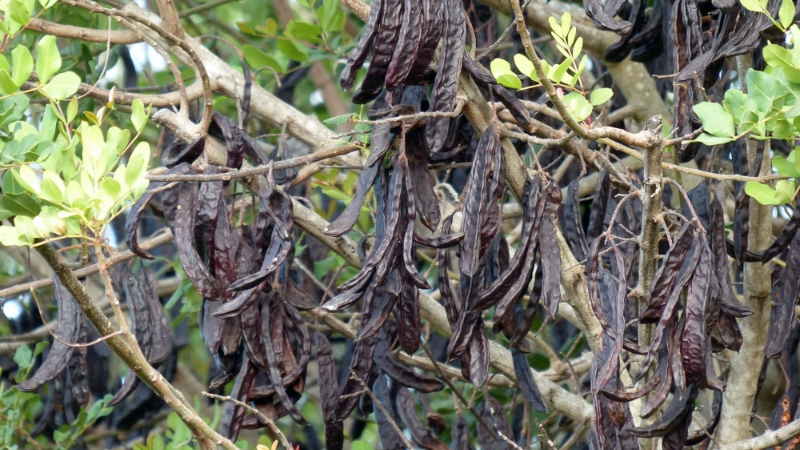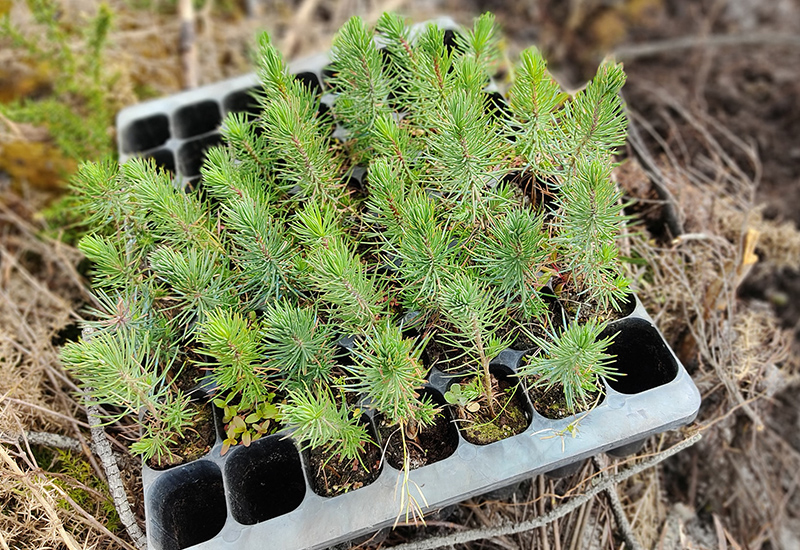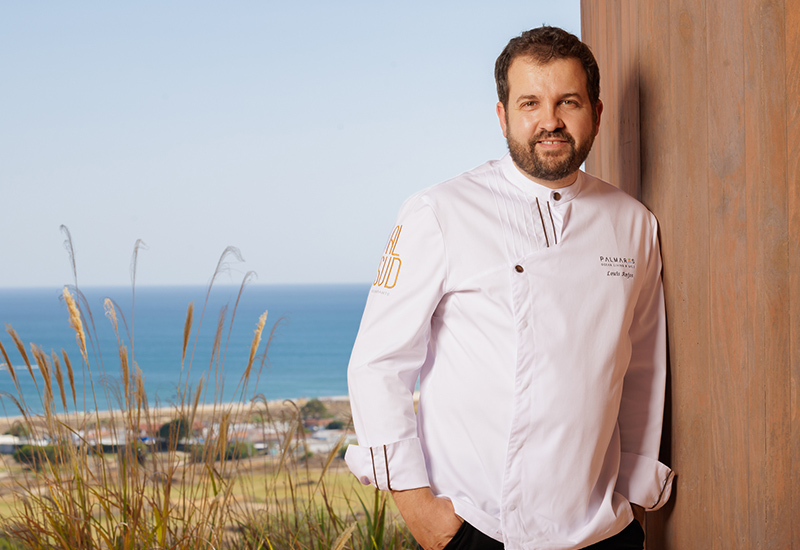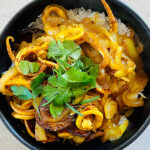By Tamsin Varley
Early in September, Cheryl and Graham Smith hosted an evening celebrating the end of the carob harvesting season at their beautiful house on the Funcho reservoir near São Bartolomeu de Messines. Over twenty guests mingled on the decking below two carob trees before being seated for a delicious tapas supper and a short lecture about carobs by Cheryl.
We learned that the carob tree (or alfarroba in Portuguese) is a flowering evergreen tree native to the Mediterranean region. The trees are slow-growing and tolerant of a wide variety of growing conditions and can live up to five hundred years. Be wary of old trees, however, as another name for them is “widow-maker” due to their tendency to suddenly shed branches. An old carob tree is a beautiful sight to behold as often the trunks become hollow and contorted offering wonderful homes to a wide variety of birds and insects.

In September, the insignificant flowers appear spirally arranged in clusters on old wood or even the trunk of the tree. From these, the leathery pods emerge, which take years to develop, turning from green to dark brown when they are ripe. When mature, they fall naturally, carpeting the ground beneath the tree. A sure sign that it is carob harvesting season is hearing a steady “tap, tap, tap” as bamboo canes are used to loosen the pods and assist their descent to the ground.
Portugal is the largest producer of the carob in the world and the pods have been described as black gold. Currently, carob pods are commanding high prices and, in just five years, the price per fifteen kilograms has quadrupled to 18€ (2021). The flattened pod can grow between fifteen and thirty centimetres long and consists of a sweet chocolate-tasting pulp and small hard inedible seeds. When processing the pods commercially, the seeds are removed and the pulp is dried and ground to make carob flour that looks like cocoa powder.
The seeds are roasted to remove the skin and ground up to make carob powder, which is used as a thickening agent or gluten replacement in the food industry. Carob flour is sometimes described as a “superfood”, meaning it offers maximum nutritional benefit with minimum calories. It is a great source of vitamin A, the B-complex vitamins, calcium fibre and antioxidants, which contribute to the healthy functioning of the nervous system, heart and muscles, aid concentration and help prevent vision loss due to ageing. It is also gluten-free, so provides an excellent alternative to conventional flour.
After our brief lesson on the carob, Cheryl then led us on a culinary journey demonstrating how to use the carob in our everyday foods. She started off making a breakfast smoothie with almond milk, carob flour, bananas, spinach and cinnamon, which had a definite chocolatey taste but would have benefitted from being chilled. We also had baskets of carob bread on our tables, which she suggested partnering with pumpkin or fig jam with cheese. She recommended substituting between 35 and 150g of wheat flour with carob flour in a typical 500g loaf, depending on the amount of nutty flavour you want. She also suggested adding variety to the bread with different combinations of molasses, cinnamon, dried figs, honey (including carob honey), ginger and nuts.

A carob vegan mousse made with carob flour and aquafaba, which is the liquid from a tin of chickpeas, served with yoghurt to counteract the sweetness is a tasty light meal. A spicy carob hot drink made with milk, cinnamon, honey and ginger helps to promote a good night’s sleep. Our furry friends can also benefit from carob. Cheryl came across Little One dog treats online made from polenta, peanut butter, carob flour and oats.
Carob bread and rolls can be found in most local supermarkets. Carob flour can be found in health shops or the health sections of supermarkets. A carob almond paste, not dissimilar to Nutella but much healthier, can be bought at Loulé market or online at www.carobworld.com and carob honey can be found in many local markets.
To find out more about a carob cookery workshop or future supper clubs, check out www.figsonthefuncho.com. Other activities include yoga retreats, painting and walking holidays and wedding packages.














